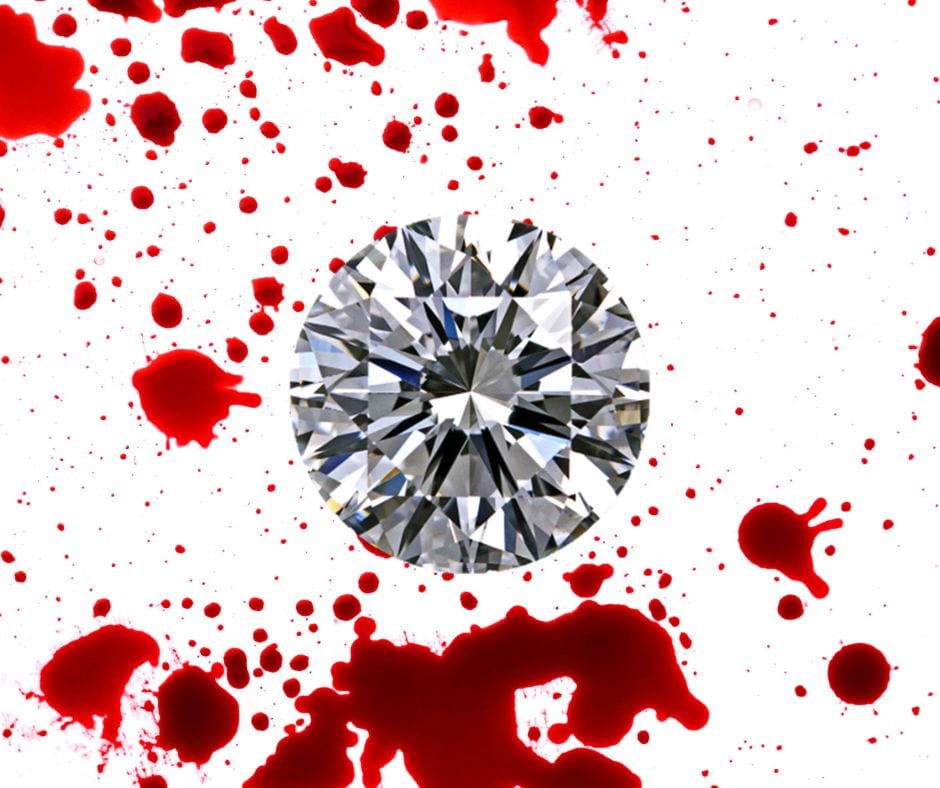Understanding Blood Diamonds
Blood diamonds, also known as conflict diamonds, are rough diamonds mined in war zones or sold to finance armed conflict against governments. These gems have a dark history, causing widespread suffering and devastation in the regions where they are sourced.
Definition and Origin
Blood diamonds earned their infamous moniker due to the bloodshed associated with their extraction and trade. They originated from conflict-ridden areas, primarily in Africa, where rebel groups exploited diamond mines to fund their violent activities.
Impact on Communities
The consequences of blood diamonds extend far beyond the mining sites. These gems fuel armed conflicts, leading to displacement, loss of lives, and destabilization of entire regions. Communities living in diamond-rich areas often endure poverty, violence, and exploitation.
Ethical Concerns and Regulations
The international community has responded to the blood diamond crisis by implementing various measures to curb their trade. Initiatives like the Kimberley Process Certification Scheme aim to certify diamonds as conflict-free, ensuring they do not finance violence or human rights abuses.
How Blood Diamonds are Mined
The journey of a blood diamond begins deep within the earth’s crust, where these precious stones form over millions of years. However, the process of extracting them comes at a significant cost to both people and the environment.
Traditional Methods
In many conflict zones, what is a blood diamond relies on labor-intensive methods, including forced labor and child exploitation. Miners work in hazardous conditions, often without proper safety equipment, risking their lives for meager wages.
Modern Mining Practices
While some mining companies adhere to ethical standards, others continue to exploit vulnerable communities for profit. Modern mining technologies have improved efficiency but often fail to address the social and environmental impacts of diamond extraction.
The Journey of a Blood Diamond
Once extracted, blood diamonds embark on a clandestine journey through various channels, eventually reaching international markets where they are polished, traded, and sold as luxury items.
Extraction
Blood diamonds are smuggled out of conflict zones through elaborate networks, evading government scrutiny and regulation. Smugglers exploit porous borders and corrupt officials to transport these gems to neighboring countries for laundering.
Smuggling and Trafficking
Traffickers use sophisticated methods to conceal the origins of blood diamonds, mixing them with legitimate stones to disguise their illicit nature. These gems then enter the global supply chain, making it challenging to trace their source or verify their ethical credentials.
International Trade
Blood diamonds permeate every level of the lab diamonds trade, from mining operations to retail stores worldwide. Despite efforts to regulate the industry, loopholes and lax enforcement allow these conflict diamonds to enter legitimate markets, fueling demand for cheap and ethically dubious gems.
Social and Environmental Impact
The consequences of blood diamonds extend beyond the human toll, leaving a trail of environmental destruction and social unrest in their wake.
Environmental Degradation
Diamond mining often involves deforestation, soil erosion, and contamination of water sources, devastating fragile ecosystems and endangering biodiversity. The scars left by mining activities can take decades, if not centuries, to heal, leaving a permanent mark on the landscape.
Human Rights Violations
In addition to environmental harm, blood diamonds perpetuate human rights abuses, including forced labor, child exploitation, and violence against miners and their communities. Women and children are particularly vulnerable to exploitation, facing risks of trafficking and sexual violence in mining areas.
Economic Consequences
While diamond-rich countries boast vast natural resources, the benefits of mining rarely trickle down to the local population. Instead, corrupt officials and foreign investors reap the profits, exacerbating poverty and inequality in these already marginalized communities.
Blood Diamonds in Popular Culture
The issue of blood diamonds has captured the public imagination, inspiring numerous works of art and advocacy campaigns aimed at raising awareness and promoting ethical consumption.
Movies and Literature
Films like “Blood Diamond” starring Leonardo DiCaprio have shed light on the dark side of the diamond industry, exposing the human suffering behind the glitz and glamour of these precious gems. Similarly, books and documentaries have explored the ethical dilemmas surrounding diamond mining and trade.
Public Awareness Campaigns
Non-profit organizations and activists have mobilized public support for ethical diamond sourcing through awareness campaigns and consumer education initiatives. By highlighting the link between diamonds and human rights abuses, these efforts seek to empower consumers to make informed choices and demand accountability from the industry.
The Future of Blood Diamonds
While progress has been made in addressing the issue of blood diamonds, challenges persist in achieving a conflict-free diamond trade and ensuring the welfare of mining communities.
Efforts Towards Conflict-Free Trade
International initiatives like the Kimberley Process continue to work towards eliminating blood diamonds from the global market. However, critics argue that the certification scheme falls short of its objectives, failing to address loopholes and instances of non-compliance.
Consumer Awareness and Responsibility
As consumers become more conscious of the ethical implications of their purchasing decisions, demand for responsibly sourced diamonds is on the rise. By supporting brands that prioritize transparency and ethical sourcing practices, consumers can contribute to positive change in the diamond industry.
Conclusion
The story of blood diamonds is a sobering reminder of the human cost of luxury goods. While efforts have been made to address the issue, much remains to be done to eradicate the trade in conflict diamonds and ensure a fair and sustainable diamond industry for all.

